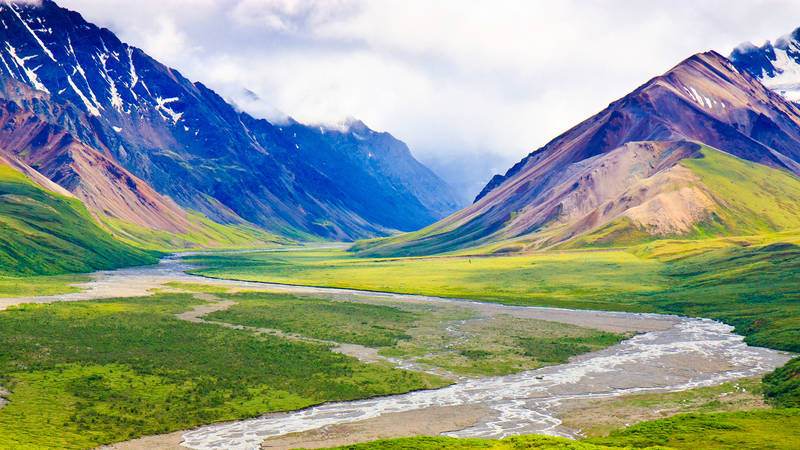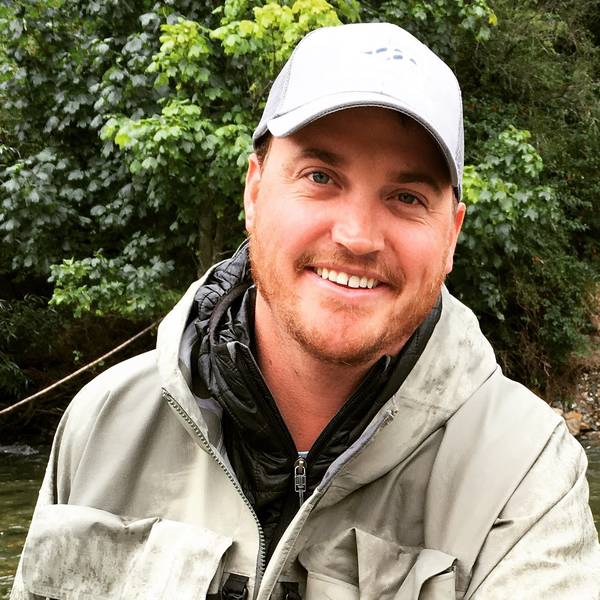On June 13, historic floods severely damaged this iconic park and its surrounding communities. What happens next?
Severe flooding had unprecedented consequences for the greater Yellowstone region earlier this month, as rushing waters caused miles of roadways to collapse, homes and bridges to wash away, and communities to become isolated without power or drinking water — putting people, infrastructure, businesses and property at risk.
Fortunately, there were no known deaths or injuries caused by the disaster, but the scale of the damage has devastated parts of the region and prompted fears that a loss in tourism could deal a second blow to area as it begins the long process of recovering and rebuilding.
Officials temporarily closed Yellowstone National Park on June 13, during the worst of the flooding, and evacuated more than 10,000 visitors as floodwaters carried off whole buildings and scattered debris throughout the river corridors. After some heroic efforts, National Park Service staff were able to reopen much of the park to a limited number of visitors, but the severely damaged northern road through the famous Lamar Valley could remain closed for months — likely the rest of the year.
Roadways between the park and the towns of Gardiner, Red Lodge and Cooke City, Montana, were wiped out, stranding community members. Farther north, ranching communities in Paradise Valley reported suffering damage to infrastructure and agricultural operations. Other area towns were also affected by the historic flooding, though thankfully, there was little damage outside the main corridors that flooded.
Above: Associated Press video footage from June 14, 2022, shows an entire house carried away by floodwaters near Yellowsone National Park.
Park County Commissioner and NPCA Advisory Council Member Bill Berg was quoted in a recent Washington Post story as saying, “The landscape literally and figuratively has changed dramatically in the last 36 hours.” Berg has lived in the area for 50 years and, after witnessing two 500-year storms in the late 1990s, never expected to see another natural disaster surpass the devastation he had already seen in the region.
“[It’s] a little bit ironic that this spectacular landscape was created by violent geologic and hydrologic events,” he added. “… it’s just not very handy when it happens while we’re all here settled on it.”
How bad is the damage?
Fortunately, area residents have not reported any significant injuries — despite surviving a variety of harrowing experiences. Numerous community members have volunteered their homes and donated money and resources to shelter and feed their displaced neighbors.
Based on other infrastructure projects in the park, it wouldn’t be surprising for costs to near $1 billion to repair and rebuild roads, bridges, sewer systems and other facilities inside and outside the park in an environmentally sensitive way. It is too soon to know the number of households and businesses affected in local communities, though one area charity expects damages to be in the millions of dollars.
As recovery efforts get underway, it presents an opportunity to rebuild in a way that is more resilient to climate change and takes additional conservation measures into account, such as preserving wildlife habitat and migration areas.
NPCA will continue to monitor the needs of the park and surrounding communities and will support a supplemental funding bill in Congress that provides sufficient resources to rebuild the park in a sustainable way.
Why did this happen?
Spring precipitation created an unusually large accumulation of snowpack in the region. Heavy rains mixed with warm, melting snow to produce a catastrophic volume of rushing waters, which overtook rivers, created mudslides and rockslides, and overwhelmed infrastructure.

How the Climate Crisis Is Affecting National Parks
Climate change is the greatest threat the national parks have ever faced. Nearly everything we know and love about the parks — their plants and animals, rivers and lakes, glaciers,…
See more ›Natural disasters like this one are becoming more frequent and severe due to human-caused global warming. While no single weather event can be definitively tied to climate change, the warm snowpack and intense rainfall are indicative of larger trends driven by the crisis.
According to recent reporting by the New York Times, “It is difficult to directly connect the damage in Yellowstone to a rapidly warming climate — rivers have flooded for millenniums — but scientists are raising the alarm that in the coming years destruction related to climate change will reach nearly all 423 national parks, which are particularly vulnerable to rising temperatures.”
How can people help?
Ways to donate aid to the region include:
The Southwest Montana Relief Fund. The Bozeman-based Greater Gallatin Chapter of the United Way is providing aid to two southern Montana counties affected by the floods at
https://www.greatergallatinunitedway.org/disaster-response/sw-montana-flood-relief-fund-serving-park-and-madison-countiesThe Carbon County Disaster Relief Fund. The Red Lodge Area Community Foundation is providing relief for flood management, individual and family emergency needs, and recovery funding in one of the hardest-hit areas of the region at https://secure.etransfer.com/eft/flexblockcode/donation1.cfm?d2org=RLACF&d2tool=CarbonCountyDisasterRelief
NPCA staff are working with park officials and community members to determine how to best support short- and long-term recovery efforts in the region, from helping at local food banks to supporting a disaster relief bill in Congress.
On Tuesday, June 28, NPCA will host an in-person fundraising event in Bozeman, Montana, that includes a virtual silent auction to help raise funds for local organizations providing direct aid in affected communities. Our corporate partner, Limestone Branch Distillery, will match all funds raised, up to $50,000. (Editor’s note: The fundraising event is over, but people can still give and have their donations matched until July 12.)
No amount is too small to help.
What should I do if I have a trip to Yellowstone planned?
Stay On Top of News
Our email newsletter shares the latest on parks.
Earlier this week, Yellowstone instituted a reservation system based on license plate numbers to help reduce crowding in the reopened southern loop of the park. Anyone with proof of an overnight reservation or of commercial or official business may enter the park at any time; otherwise, recreational visitors in motor vehicles are allowed to enter on alternate days, depending on their license plates.
Although visitors will be unable to see some noteworthy attractions, such as Mammoth Hot Springs and Lamar Valley, park staff have made significant efforts to open other world-class destinations, including Old Faithful and the Grand Prismatic Springs, to the general public again. Area businesses rely on tourism, and Yellowstone continues to be a rare and special destination. Consider keeping your plans and maintaining a flexible schedule, if you have the ability to do so.
About the author
-
 Dan Bailey Former Yellowstone Program Manager
Dan Bailey Former Yellowstone Program ManagerDan manages NPCA’s conservation campaigns focusing on Yellowstone National Park and the surrounding Greater Yellowstone Ecosystem (GYE).